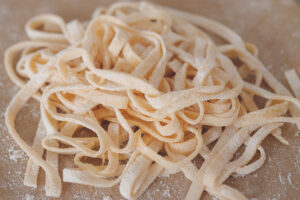Pandoro History and Recipe
If you’re looking to add a little something special to your holiday feast with friends and family, why not try out the traditional Italian dessert known as Pandoro. Although some may disagree, most of my research pointed towards the city of Verona as the origin of this delicious treat. Having been most commonly consumed by the royalty and nobility during the 17th and 18th centuries, there is some research that this delicious bread was already appreciated in ancient Rome in the 1st century. Pandoro, which literally means ‘royal bread’ is a type of cake that consists of eggs, butter, sugar and honey and is often served with a layer of icing sugar atop. I have heard that it just melts in your mouth and am personally looking forward to trying it myself during this festive season.
Although nowadays, many Italians prefer to purchase this cake as it can be time consuming and difficult to bake, for those of you who like the challenge in the kitchen! Here is a recipe for your baking purposes:
Pandoro Recipe (serves 6)
– High-sided mold: approximately 10 inches (25 cm) high, 8 inches (20 cm) across at the top, tapering, and star-shaped in cross section, usually with eight points.
– If this mold is unavailable, you can use a similarly tapering cylindrical mold.
Ingredients:
- 3 cups (300 g) flour
- 8 ounces (200 g) unsalted butter, at room temperature
- 2/3 cup (120 g) sugar
- 2/3 ounce (20 g) active baker’s yeast (commonly found in the dairy section)
- 1/2 cup cream
- The grated zest of an organically grown lemon
- 5 egg yolks
- 1 whole egg
- 1/3 cup (30 g) confectioners sugar
- 1 teaspoon vanilla extract
- Flour for your work surface
- Butter and flour for the mold
Crumble the yeast into a bowl and combine it with 1 tablespoon of sugar, an egg yolk, 1/3 cup of flour, and sufficient water to make a soft loaf. Cover the bowl and let the loaf rise, in a warm place, for 2 hours.
Sift half the remaining flour onto your work surface and combine it with half the sugar, then work in the starter loaf, 3 yolks, and 3 tablespoons of the butter. Knead well, shape the dough into a ball. Lightly flower the bowl, set the dough in it to rise, and cover it with the cloth.
After another 2 hours combine the remaining flour and sugar on your work surface and work it into the dough, together with the whole egg and the yolk. Knead the dough well, until it is homogenous, put it in a floured bowl and cover it with a cloth, and let it rise for another 2 hours.
Flour your work surface and return the dough to it, add the lemon zest and the vanilla extract, and then knead in the cream, a little at a time, so it is absorbed well.
Spread the dough out on your work surface and shape it into a rectangle using your rolling pin. Cut the remaining butter into pits and distribute them over the center of the sheet. Fold the sheet in thirds, and reroll it out. Let it rest another half hour, and repeat the operation. Do this once more.
Butter and flour the mold, turn it upside down, and rap it to remove excess flour. Shape the dough into a ball and put it in the mold; it should fill the mold about half-full. Cover the mold with a cloth and put it into a warm place to rise until the dough reaches the top of the mold (about 20 minutes).
While the dough is rising, preheat your oven to 400 f (200 C). Bake the Pandoro for a half hour, then reduce the heat to 360 F (180 C) and bake for a half hour more. Unmold the Pandoro immediately, and cool it on a rack. Before serving it, dust it with abundant powdered sugar.





